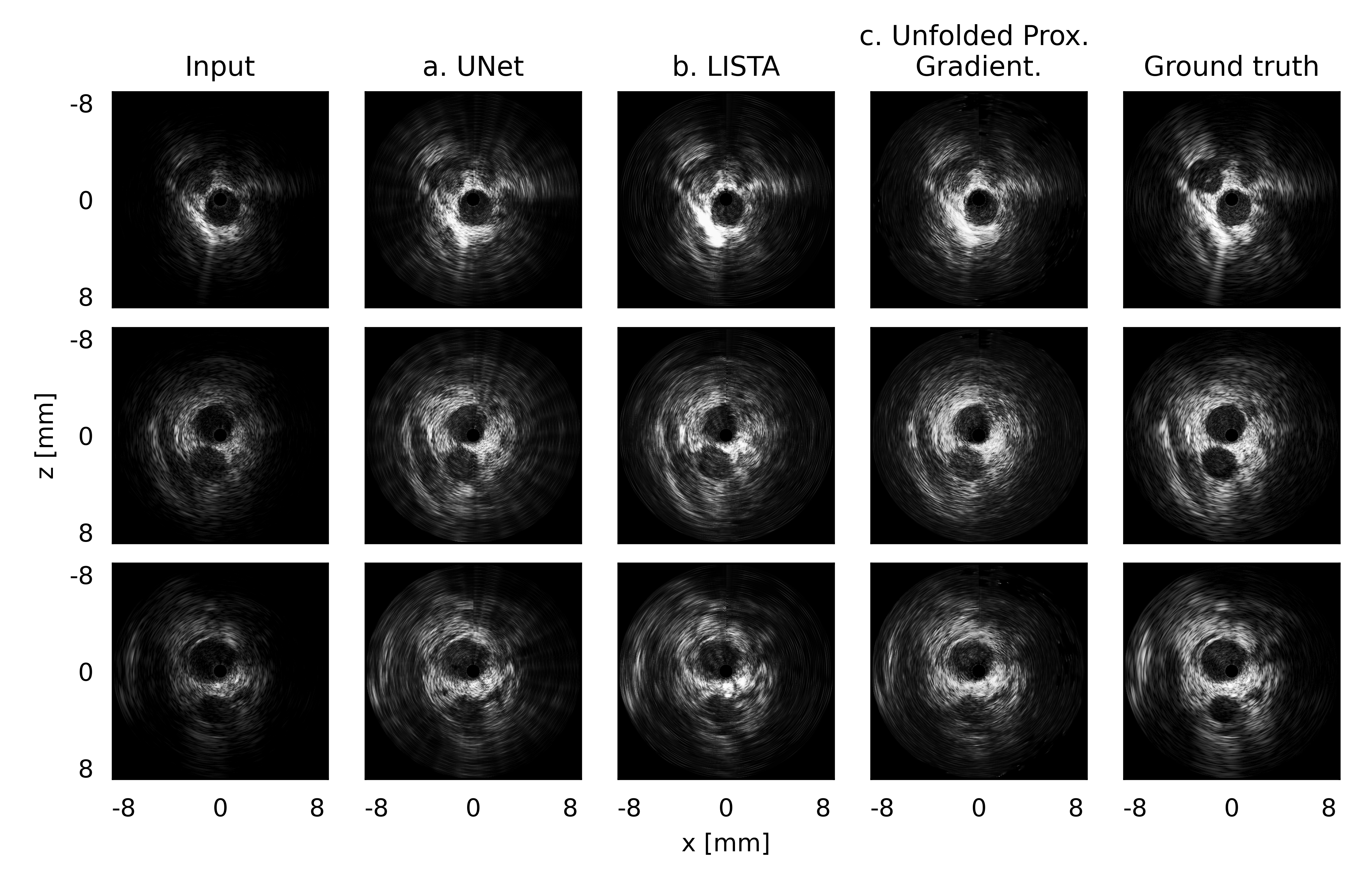Intravascular UltraSound (IVUS) is a key tool in guiding the treatment and diagnosis of various coronary heart diseases. However, due to its nature IVUS is a very challenging modality to interpret, and suffers from a severely restricted data transfer rate. This forces a trade-off between temporal and spatial resolution. Here, we propose a model-based deep learning solution that aims to reconstruct images from data that has been beamformed by under-sampling the number of channels by a factor of 4. By exploiting the physics based measurement model, we achieve better performance and consistency in our predictions when compared to benchmark models. This lowers the computational load on existing hardware and enables in exploring our ability to run multiple visualisation modalities simultaneously, without a loss of temporal resolution.

Comparison of IVUS reconstruction methods